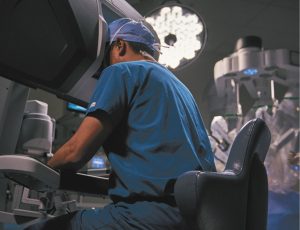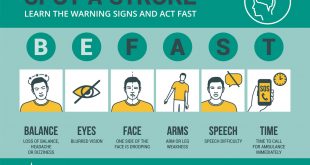By Heidi Smith, Contributor


Q. What is an inguinal hernia, and what causes it?
A. A hernia is a bulging of the contents of the abdomen through a weak area in the abdominal wall. There are other types of hernias, but inguinal hernias – which occur in the lower abdominal wall – are the most common type we see, especially in men. There are both congenital (a condition you’re born with) and acquired components that contribute to hernia development. Patients with a family history of hernia are four times more likely to develop an inguinal hernia. Diseases such as COPD (chronic obstructive pulmonary disease) contribute to higher incidence of inguinal hernia. Conditions that are associated with increased intra-abdominal pressure such as chronic cough, heavy lifting, obesity, and straining due to constipation play a role as well.
Q. Do women develop inguinal hernias?
A. While men account for 90% of all inguinal hernias, approximately 2% of women will develop an inguinal hernia in their lifetime. However, women account for about 70% of all femoral hernias (a similar groin hernia).
Q. What are the symptoms of hernias?
A. With most hernias, patients will notice a bulge and there may be discomfort. The bulge may come and go as it can recede back into the abdominal cavity and then bulge out again. For inguinal hernias, the bulge and discomfort will be located in the groin area. You will notice it more when standing up, bending or crouching. It may go away when you lie down.
Q. How do you diagnose the condition?
A. Symptoms are clue number one. I focus on listening carefully to my patient and performing a thorough physical exam.
Q. Is surgery the only treatment?
A. Some hernias don’t require surgery, so we monitor the patient’s condition over time. However, some hernias can cause serious complications. Potential complications of not repairing a hernia can include worsening pain and possible bowel obstruction. A hernia can strangulate the bowel or any tissue or organ that is trapped within the hernia defect. Interrupting blood flow can lead to infection or death.
Q. Could you describe the surgical procedure? Is it a major operation? Does it require a hospital stay?
A. I’m glad to say that with advanced surgical techniques and technologies available today, we can repair many hernias using minimally invasive approaches that cause minimal scarring and allow for rapid recovery. The typical inguinal hernia repair is an outpatient procedure that takes less than an hour of operative time. The surgery is performed through very small incisions using highly specialized instrumentation and a 3D, high-definition camera to view the anatomy in crystal clear detail.
The surgeon will stand next to the patient or sit at a console beside the patient to control laparoscopic instruments. Robotic assistance allows for even greater precision and visualization. It’s an incredible advancement in medical science that really benefits patients.
Q. You mentioned a faster recovery after minimally invasive surgery.
A. I find that patients do much better and are much happier after minimally invasive surgery. We usually don’t need to give many narcotics for pain after the procedure. Patients usually feel a lot better after a week or two, and then return to normal activities like work and exercise much faster than with larger incisions for open repairs.
Q. If someone thinks they have a hernia, how should they go about choosing a specialist?
A. Obviously, patients will look at a physician’s training and experience, particularly with hernia repair and minimally invasive approaches. Beyond the technical expertise, you want a surgeon who is going to listen and try to understand the whole person. You want a partner who will make you whole again. Every day I see people who are suffering. It gives me tremendous personal satisfaction to aid those people and get them back to what makes them happy, what makes them feel fulfilled. At the end of the day, you want a doctor who understands that you’re not a condition. You’re a person.
Wesley Hendricks, D.O., FACOS, sees patients at Gulf Coast Medical Group in Venice. To schedule an appointment, call (941) 613-5044.
(941) 613-5044
GulfCoastDrHendricks.com
 Southwest Florida's Health and Wellness Magazine Health and Wellness Articles
Southwest Florida's Health and Wellness Magazine Health and Wellness Articles

